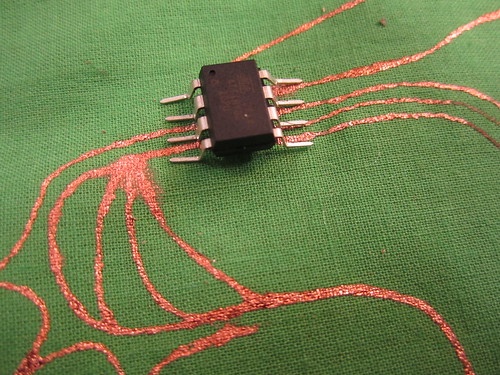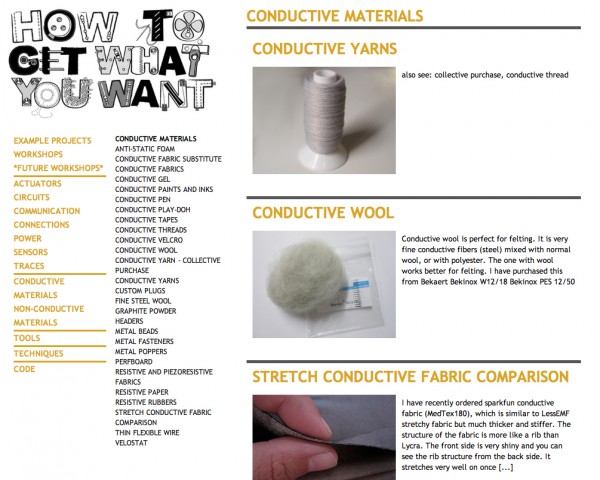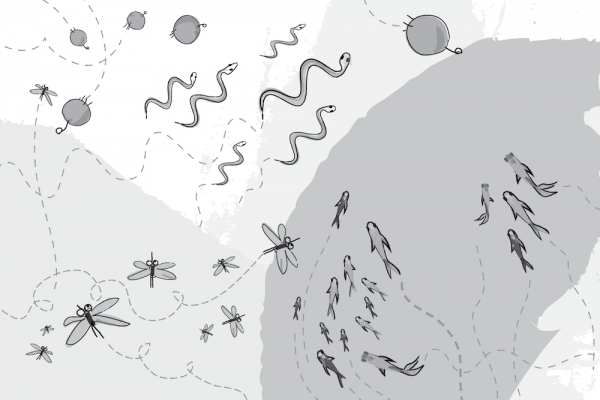Very nice design research project from BERG and Google Creative Labs.
http://berglondon.com/blog/2012/12/19/lamps/
This is too much Magic if you ask me. It’s a bit creepy that a manufacturer has to make such a video to convey the functions of their device. I believe people are generally smarter than that, at least smarter than this video insinuates.
We all know it’s fake, but interesting a bit nevertheless. I like the first color selection gesture. And I’m happy they did not depict “pinch to scale” the modify the shirt.
Many people have probably thought about this nice combo of tradition piano keys and touch sensors, but only clever germans made it happen! Yest it’s pricey, but it seems very well manufacture, based on custom hardware controller they had to develop. Now that is a crazy amount of parameters/variables to map :-)
Standard keyboards give you control over the pitch and a broad sound shaping parameter based on how hard the key is pressed, but these options are only available at the moment the key is pressed. Wouldn’t it be much nicer if you could change the sound of a note while holding it without having to take your finger off the key or cut off one of your hands while playing?
Check more spacey awesomeness at http://www.endeavour.de
Lapka is a set of sensors to measure stuff around you that are normally invisible, such as: radiation, electromagnetic fields, humidity and perhaps the most interesting: the organic-ness of the your food (really?). The industrial and graphic design are nicely done and line up really well. The Verge made a better video (scroll down), demonstrating the product (less Attenborough-ish than this video-ad).
Sportsfriends is compendium of four joyfully fun local multiplayer games for PlayStation 3 and home computers.
•   Johann Sebastian Joust – Douglas Wilson
•   BaraBariBall - Noah Sasso
•   Super Pole Riders - Bennett Foddy
•    Hokra - Ramiro Corbetta
They already exist as playable prototypes, and have been exhibited around the world at festivals and parties. They’ve received lots of honors and awards, including three IndieCade awards and the Innovation Award at the 2012 Game Developers Choice Awards. Most importantly, we know they’re super fun. Sony does too, and they’ve already given us the go-ahead to put Sportsfriends on the PlayStation 3!
It is now 5 hours left on the Kickstarter. Back them and let the world be a better place!
From the website:
“The little device is called a milli-motein — a name melding its millimeter-sized components and a motorized design inspired by proteins, which naturally fold themselves into incredibly complex shapes. This minuscule robot may be a harbinger of future devices that could fold themselves up into almost any shape imaginable.“
KOBAKANT is a collaboration between Mika Satomi and Hannah Perner-Wilson. Hannah came to Umeå/UID during SIDeR 2010 and ran a workshop Handcrafting a textile sensor from scratch. I just found out the online repository where Mika and her provide an absolutely amazing documentation about wearable technology.
Check out the Pom Pom Tilt Sensor and a lot more projects. It’s truly inspiring the way they explored and documented all those materials/processes.
Intoino is a mobile App (iOS and Android) that can talks wirelessly to Arduino boards. From the website: “Tell your Arduino what to do with INTOINO i-Codes (small Arduino Apps) and you’ll see action coming true: no code, no programming skills.”
At first sight, the drag&drop interface with i-Codes looks a little limiting. But there might be a lof of customization features possible in the final release? I’m curious how this will turn out!
Some of the keynotes and talks from UX week 2012 held at the end of August are trickling in online. I’ve online watched Jensen Harris‘ keynote The Story of Windows 8 (top one above), but there seems to be a good number of other talks available too.
In author’s words, “Can we capture the unpredictable evolutionary and emergent properties of nature in software? Can understanding the mathematical principles behind our physical world help us to create digital worlds? This book focuses on the programming strategies and techniques behind computer simulations of natural systems using Processing.”
SIDeR is hosted in Aarhus, Denmark this year from 9-10 april 2013. (I am currently interning in Aarhus and promise you it is a nice city, and in April you will be delighted to leave winter in UmeÃ¥ and experience Spring in Denmark.) Below is the description from their website.  It is not only a great chance to get your thoughts published, but you also get to meet other interaction design students from all of Europe, and there’s a good party at the end to sum it all up.
Theme: Empowering Interactions
The conference theme for the 9th Student Interaction Design Research conference (SIDeR’13) is Empowering Interactions. Interaction design is now pervasive in all areas of life and there are few activities that are not in some way augmented, supported or even made possible by information technology. People from all walks of life are influenced by technology and in turn influence, appropriate or simply love technology. This has led to new opportunities for empowering people through technology, as well as helping people create technology that empowers themselves or others. This can be seen both as a democratic endeavour that opens up the world of information technology to everyone, as well as a pragmatic way of ensuring that products are actually used after their creation.
At the SIDeR’13 conference we invite everyone to submit work highlighting different forms of empowering interactions. You are free to interpret our theme as you see fit – it is a theme, not a stringent formula to be fulfilled. We welcome case studies, theoretical musings and couplings of theory and practical work.
Call for papers
We invite three different types of submissions:
1)Â Â Â Â Papers. Papers must not exceed 4 pages (~2000 words) in length following the standard ACM format. The papers will be presented orally by authors on stage for 10 minutes, and the presentations are grouped in sessions with other related papers.
2)Â Â Â Â Posters. Posters should be submitted as a .pdf file and must also include and accompanying description, which must not exceed 2 pages in length following the standard ACM format. Posters will be presented in dedicated poster sessions.
3)Â Â Â Â Demos. Demos can be submitted by sending a technical description, which must not exceed 2 pages in length following the standard ACM format. Demos will be presented in dedicated demo sessions.





